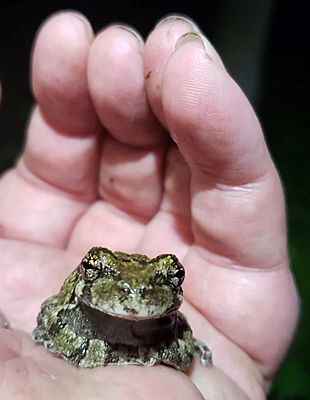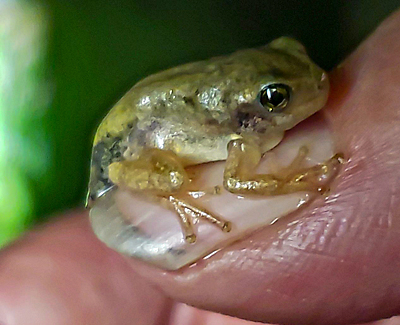
Adult Gray Treefrog.
Photo by Jenny Erickson
As we near the end of our first season of our Amphibian Monitoring Program in several years, we have seen many exciting things during this time. We have had volunteers monitoring sites to record data regarding the frog calls in our local wetland areas. The dedicated volunteers went out faithfully in all types of weather to help discover what species of frogs and toads are present, and the estimated size of those populations. The hard work of the volunteers is greatly appreciated and the information gained is invaluable in continuing our tracking of amphibian populations in Loudoun County. The frog that seemed to steal everyone’s hearts this year was the Gray Treefrog (Hyla versicolor).
The Gray Treefrog is a master of camouflage, and as the Latin name suggests (versicolor means “variable color”), they are able to change color to darker and lighter, often depending upon the surrounding light conditions. They can be very hard to locate during the day, but at night they come to life. They migrate towards a water source during the evening when the weather is humid or rainy. They will then vocalize, often in large numbers, in the hopes of attracting a mate. Many of the volunteers had never seen a Gray Treefrog, so this opportunity to hear them call and be able to visually observe them was quite a treat. Some even experienced being used as a jumping point for them when a Gray Treefrog landed briefly on them on its way to the water.
The Amphibian Monitoring Program started up this year after being dormant for several years. We will continue the frog call data collection annually and add other amphibian and reptile related citizen science opportunities including biannual herp counts throughout the county and salamander population surveys. The training sessions for the frog call data volunteers occur annually in January, with other program opportunities throughout the year.

Gray Treefrog froglet, just emerged from life underwater.
Photo by Jenny Erickson

